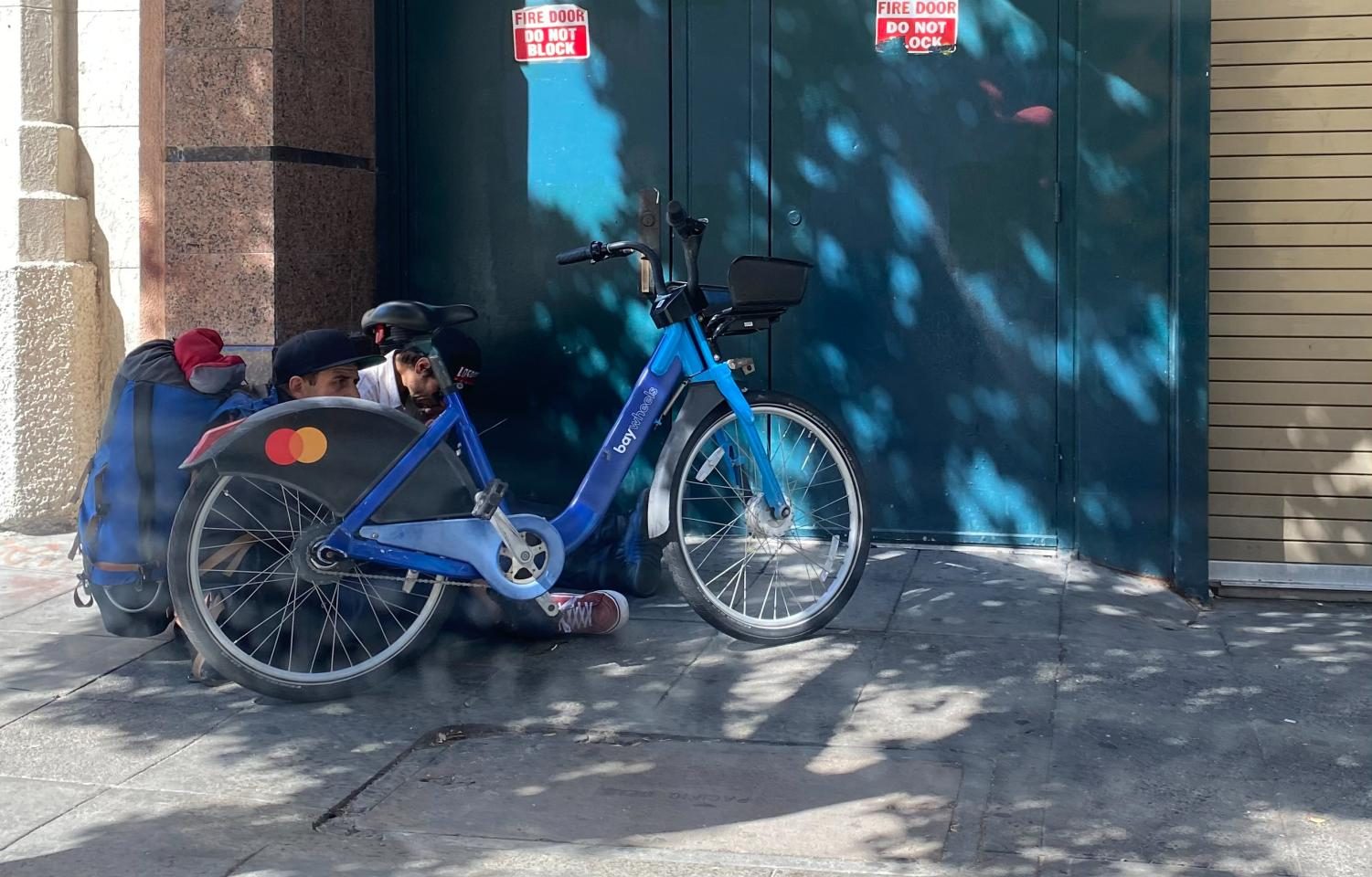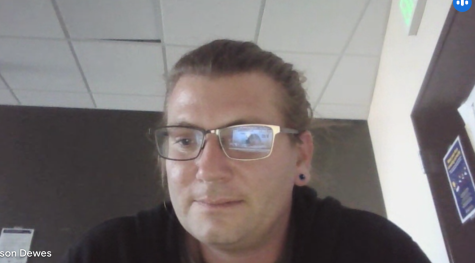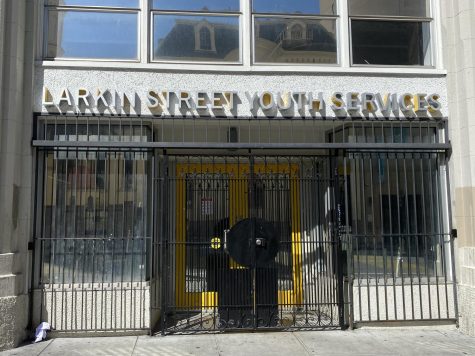
Twitter: Annabelchiaa


November 10, 2022
The closed room filled with the waft of bitter antiseptics and the squeaks of linoleum floors were all Jason Dewes experienced for his first six months as a 21-year-old in San Francisco. Although, if he weren’t in the hospital, he’d be back at the homeless shelter; a targeted attack on his first night sent him to this hospital room.
The violent interaction didn’t phase him, though. As a young person living with homelessness since the age of 15, this was his normal.
“So much crap has already happened; it was just another night,” Dewes said.
Dewes’ experience, although frightening to some, is familiar to too many. According to the National Conference of State Legislatures, about 4.2 million youth and young adults between the ages of 13-25 experience homelessness – living without a guardian and a home.
Fifteen years later, he’s working as a project housing manager for 3rd Street Youth, an agency in San Francisco aiding the community’s youth after being homeless for 10 years.
“I was homeless from when I was 15 until I was 25, so I noticed a lot of broken systems and parts,” Dewes said. “I wanted to return and fix some of the broken parts to make them less damaged.”
Dewes’ experiences were mentally, emotionally, and physically draining, and his mission is to ensure no one has to go through the same thing he did.

I grew up really quick – my 15th birthday, my mom was like ‘This is it, you’re out,’ so I was put out in the street to fend for myself from a young age.
— Jason Dewes
“I grew up really quick – my 15th birthday, my mom was like, ‘This is it, you’re out,’ so I was put out in the street to fend for myself from a young age,” Dewes said.
Originally from the East Coast, Dewes had a long journey to the West Coast.
“I was homeless on the East Coast and went to New Orleans, but then Katrina hit, so I got sent to Dallas. From Dallas, I got sent to L.A., which had no resources for younger people. So they sent me to San Francisco,” Dewes said.
According to Absolute Advocacy, homeless youth are at high risk for drug abuse due to environmental factors. Dewes was a victim of this statistic.
“I was homeless with punk rock musicians, and there was a lot of drugs and alcohol, but it was just a part of everyday life,” Dewes said. “That was the biggest challenge I had to overcome on my journey.”
Dewes notices that everyone has a unique situation regarding how they became wrapped up in substance abuse. While he picked it up on the road, others are conditioned by the system if they don’t acquire assistance from juvenile services.
“There were 18 and 19-year-olds staying in adult shelters where they were pretty much going to criminal school. They were taught how to make and sell drugs and inside the shelter system,” Dewes said.
In California, the term “homeless youth” generally refers to unaccompanied minors, ages 12 through 17, who are living apart from legal guardians, as well as young adults, ages 18 through 24, who are economically and emotionally detached from their families. Additionally, they lack a fixed nighttime residence.
However, living with homelessness could look different for each person and is often hard to detect.
Minors and those under 24 end up homeless for various reasons, but at 3rd Street Youth, Dewes encounters many in tight situations due to drug abuse from family members.
“Drug abuse is a common reason for homelessness because when your parents are getting high all the time, they’re not feeding you or making sure you’re going to school, so they just go off and do their own thing,” Dewes said. “Then, the parent gets evicted, or they move away and disappear, and the child is left behind.”
According to California’s Coalition for Youth, other common causes of youth homelessness include familial disputes, rejection of sexual orientation, or pregnancy.
Despite acts such as the McKinney-Vento Act, which works to help homeless youth, there’s been an increase within the past decade. Jacinda Goodwin from the National Center for Homeless Education said that the number of students experiencing homelessness has been increasing by about 4% per year for about the past 10 years.
In addition, Dewes has also personally witnessed an influx.
“When I was homeless, I was one of four people at the adult shelter under 20. Now when you look at the adult and youth shelter numbers, there’s been a large increase in people under the age of 20,” Dewes said.
Dewes holds suspicions as to a potential cause.
“There’s been an increase in heroin usage over the past 10 to 15 years, so many parents have been dying from heroin or drug usage,” Dewes said. “Well, if grandma can’t take care of them, the kid ends up on the street.”
However, despite the other conventional reasons why a young person ends up on the street, another contributing factor is the broken system.
Although intended to aid young people, the systemized issues within the foster system have exacerbated the amount of youth without a home.
Dewes advocates for reforming the foster care system in certain aspects as their neglect personally impacted him.
“The foster system wouldn’t take me when I was homeless,” Dewes said. “My teacher called ‘CPS’ because they just thought, ‘oh, he has a place to live,’ so they just let me slip through the cracks.”
Doug Styles, the executive director of Huckleberry House in San Francisco, has also noticed the foster system issues and how it’s often a barrier between youth in crucial times of development and the help they require.
“The foster system almost operates on the belief that if someone is 16 or 17 and they’ve only got a year or two left in the system, there’s nothing they can do,” Styles said. “There’s not a lot of crucial support for those who fall in these age categories, which negatively impacts the trajectories of these people’s lives.”
Many people seeking services at the Huckleberry House are in the foster care system but aren’t gaining sufficient support.
“We have some people who are technically in the system but are roaming around and aren’t connecting to a family, and sometimes, it’s hard to find their social worker,” Styles said. “We also have people who dropped out of the system and others who have just been a challenge in the foster system, so a good placement hasn’t been found.”
Besides declining help to countless youth, the foster system has an extensive list of abuses. According to the Children’s Law Center of California, youth booted out of the foster care system generally lacked solid and supportive relationships.
However, states that kept some children over 18 in the system experienced better results, progressed further in education, experienced less economic hardship, and had greater access to mental health resources.
The law in California, though, is that once one turns 18 or even nearing 18, they’re out or turned away and left to fend for themselves.
Over the years, activists in San Francisco have improved the situation for young people compared to Dewes’ era with an increase in youth programs.
“Actual youth services in San Francisco only used to be Larkin Street. They had a 12-bed shelter on Eddie street– that was all they had. Over the past 15 years, it’s built up to where it is now,” Dewes said.
Another service in San Francisco actively working to help homeless youth is the Huckleberry House, a transitional home.
Established during the Summer of Love in 1967, Huckleberry House was one of the first runaway youth shelters in the nation. Hidden under the dazzling hippie migration was a large influx of homeless youth.

“With many people coming to San Francisco to find enlightenment, many youths found themselves homeless and on the street. Many were leaving challenging situations just to find themselves in even greater troubling situations,” Styles said. “A group of community members got together and formed Huckleberry House.”
The Huckleberry House intends to help the youth in the community and acknowledges that the typical prejudices against young people living with homelessness are products of their environments.
“We operate on the basis that young people aren’t the problem– they’re not bad or criminals,” Styles said. “They’re struggling– and they’re struggling because some family or school systems failed them.”
While being a transitional home for minors and housing about 200-300 people a year, Huckleberry also provides programs that work to aid the root of the issues, such as strengthening family relations, counseling, and more.
When looking for help in San Francisco, young people can also turn to 3rd Street Youth, an access point for young people to get essential resources. They work with 18 through 27-year-olds and provide services such as setting clients up for success when applying for housing or giving opportunities for education and employment.
We operate on the basis that young people aren’t the problem– they’re not bad or criminals. They’re struggling– and they’re struggling because some family or school systems failed them.
— Doug Styles
There are different reasons why individuals hear about these shelters; the city of San Francisco recognizes Huckleberry and 3rd Street as licensed facilities, according to both Dewes and Styles. However, there’s no need for publicity because the greatest advertisers are through word of mouth from people they’ve aided.
“Not a month goes by where I don’t bump into somebody in the community as I’m wearing a t-shirt or Huckleberry hat at some event, and somebody comes up to me and says, ‘hey, I was at Huckleberry House, and it really changed my life,'” Styles said. “We steer people towards a positive path through many challenges, and that’s the impact that Huckleberry has had on the community.”
Dewes and Styles can affirm the gratification of knowing their work drives others in the correct direction.
“‘I’ve watched youth come in, and they were living at the Candlestick point, and now they’re living in Vallejo; they’re paying their rent in full and doing really well,” Dewes said. “To me, that is, like, my favorite part of working here is watching people exit the programs and being 100% successful.”
The issue will still loom over society as long as the same systems are integrated within the culture, but the least people can do is act with kindness when they see someone in trouble.
“If someone needs help, the best thing to do is refer them to an access point and provide information,” Dewes said. “Oh, but the best thing they probably need is socks; anyone on the street always needs socks.”
